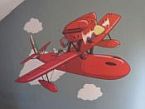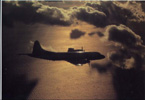ChezDaJez
Posts: 3436
Joined: 11/12/2004
From: Chehalis, WA
Status: offline

|
quote:
ORIGINAL: mike scholl 1
quote:
ORIGINAL: Icedawg
quote:
ORIGINAL: crsutton
The P38 E was a complex plane compaired to other Allied fighters but in game the difference between a service rating of 3 vs 2 is quite onerous. I have whined about this before but nobody pays me much heed  , service ratings are one of the nicest new features to aircraft in AE but I think they really have it backwards. As it is now the Japanese player with most of his early war fighters having service rating of one to the Allies two or three really hold a distinct advantage in that he can normally put his fighters back up in the air very fast. The reality was that by late 42 Japan was already suffering severe shortages of parts and trained mechanics at front line bases. It was not uncommon for 50% of the aircraft at an advance base to be grounded for lack of parts and the Allies destroyed many on the ground. , service ratings are one of the nicest new features to aircraft in AE but I think they really have it backwards. As it is now the Japanese player with most of his early war fighters having service rating of one to the Allies two or three really hold a distinct advantage in that he can normally put his fighters back up in the air very fast. The reality was that by late 42 Japan was already suffering severe shortages of parts and trained mechanics at front line bases. It was not uncommon for 50% of the aircraft at an advance base to be grounded for lack of parts and the Allies destroyed many on the ground.
Allied planes were more complex but even with spot shortages of parts the Allies were in a much better postion to keep those complex aircraft in the air than Japan was able to keep her more simpler planes flying. This is not the effect we see in game until much later when the Japanese service ratings get pretty bad.
Isn't this more an indication of poor supply and low replacements than of service rating? IF adequate supply and mechanics had been available, the planes would have been relatively easy to service, right?
Not really..., you can't deliver what you don't produce. And Japan lacked the huge pool of trained and backyard auto mechanics the US had to draw from because her automotive industry was primitive and small.
Mike has this correct. The average Japanese did not have the "shade tree mechanic" experience or mentality that allied mechanics had from years of tinkering around with automotive engines and other mechanical devices. Japan was only a few decades into the industrial age. The average Japanese mechanic also could not hope to match the average allied mechanic's ability to jury rig.
Another issue with Japanese aircraft maintenance was the near complete lack of spare parts in the field later in the war. Japan's industrial capacity was churning out sufficient parts to build new aircraft but they couldn't maintain a decent supply of parts. This was one of the reasons that the Ki-61 Tony had such a dismal service record. With it's extremely tempermental engines, it needed spare parts that often could not be found. And even when available, the machining tolerances were often too great to allow for reliable use.
Another issue lay in the design of certain Japanese aircraft. The A6M series Zero was one. It had a very straightforward, simple and strong design that made it easy to build. But repairing battle damage was another thing entirely. For example, if one of the wings was damaged and needed replacing, you just couldn't remove the damaged wing. Both wings had to be removed as they were built as a single unit. That meant suspending the fuselage from a special cradle and removing most of the cockpit assembly as the top of wing center section was the floor of the cockpit. Made for quick production but very slow repair.
Chez
_____________________________
Ret Navy AWCS (1972-1998)
VP-5, Jacksonville, Fl 1973-78
ASW Ops Center, Rota, Spain 1978-81
VP-40, Mt View, Ca 1981-87
Patrol Wing 10, Mt View, CA 1987-90
ASW Ops Center, Adak, Ak 1990-92
NRD Seattle 1992-96
VP-46, Whidbey Isl, Wa 1996-98
|
 Printable Version
Printable Version











 now so hopefully for our game the airwar starts to get closer to center.
now so hopefully for our game the airwar starts to get closer to center.

 , service ratings are one of the nicest new features to aircraft in AE but I think they really have it backwards. As it is now the Japanese player with most of his early war fighters having service rating of one to the Allies two or three really hold a distinct advantage in that he can normally put his fighters back up in the air very fast. The reality was that by late 42 Japan was already suffering severe shortages of parts and trained mechanics at front line bases. It was not uncommon for 50% of the aircraft at an advance base to be grounded for lack of parts and the Allies destroyed many on the ground.
, service ratings are one of the nicest new features to aircraft in AE but I think they really have it backwards. As it is now the Japanese player with most of his early war fighters having service rating of one to the Allies two or three really hold a distinct advantage in that he can normally put his fighters back up in the air very fast. The reality was that by late 42 Japan was already suffering severe shortages of parts and trained mechanics at front line bases. It was not uncommon for 50% of the aircraft at an advance base to be grounded for lack of parts and the Allies destroyed many on the ground. 
 Yes, if you are playing scen #2 like me (big mistake) then it would be a fair guess that there would be plenty of Japanese mechanics on hand.
Yes, if you are playing scen #2 like me (big mistake) then it would be a fair guess that there would be plenty of Japanese mechanics on hand.




 New Messages
New Messages No New Messages
No New Messages Hot Topic w/ New Messages
Hot Topic w/ New Messages Hot Topic w/o New Messages
Hot Topic w/o New Messages Locked w/ New Messages
Locked w/ New Messages Locked w/o New Messages
Locked w/o New Messages Post New Thread
Post New Thread